AUSTRALIAN PAIN SOCIETY NEWSLETTER



2019 seems to be disappearing at a rapid rate, but there is no rest for the APS! Our new President Dr Anne Burke provides a great update on what has been happening since we wrapped up the ASM on the Gold Coast, which seems like an eternity ago. It is encouraging to hear the about the connections that we have on an international stage, from the members of the Association of South-East Asian Pain Societies, the IASP Executive Team, and the American Pain Society. It is times like these that truly test the strength of our collaborations, given the current hardships facing our American colleagues.
The series of interviews with the international keynote speakers from the ASM continues, with my interview with Tor Wager featured in this edition of the eNewsletter. It was an incredible experience to get to speak to all three international keynotes, so I hope everyone enjoys getting to learn more about each of them. This edition of the eNewsletter also features a summary of a talk from Professor Milton Cohen at the ASM relating to the inclusion of chronic pain as a disease within the International Classification of Diseases (ICD-11). This inclusion was approved in late May by the World Health Organization and announced with great pleasure by IASP President Lars Arendt-Nielsen in the June edition of IASP PAIN: E-Monthly.
APS Member Joanne Harmon and colleagues highlight their recent study into an ethnographic investigation into the perceptions of registered nurses in acute
care hospital settings when providing pain care provision in older adults. This interesting paper discusses how culturallymediated practices were a major factor in the barriers for pain care provision. If you are an APS member with a recent publication that you would like to share with your colleagues, please don’t hesitate to get in touch with the team!
It is also a pleasure to congratulate APS members Emeritus Professor Maree Smith (Companion of the Order of Australia) and Dr C George Merridew (Member of the Order of Australia) who received awards in the recent Queen’s Birthday Honours. Emeritus Professor Smith has made significant contributions as a pioneer in research and innovation in the treatment of neuropathic pain, while Dr Merridew was recognised for his significant service to surgical and obstetric anaesthesia. Congratulations to both.
There are plenty of fantastic events coming up later in the year that will be of interest to many of our members. October is full to the brim with these events, including the NHMRC CRE in Recovery Following Road Traffic Injuries Symposium, the Rehabilitation Medicine Society of Australia and New Zealand Annual Scientific Meeting, and the Pain Interest Group Nursing Issues Annual Professional Development Day. Don’t miss out on these great events!
Lincoln Tracy Assistant EditorEveryone, I
begin to tell you all how chuffed I am to be writing this; my first report as APS President. Our society has a long tradition of working to improve the lives of people who are living with pain and I am incredibly honoured to be able to help drive that work over the next two years. As I settle into my role, I would like to acknowledge my predecessor, Ms Fiona Hodson, and thank her for her passion, commitment, and leadership over many years, especially during her tenure as President.
To say I’ve hit the ground running would be a bit of an under-statement. The last few months have been incredibly busy in the APS office. We started on the Gold Coast for our annual ASM which, as you could see in the last newsletter, was a tremendous success. Massive thanks to A/ Prof Kevin Keay, the SPC, the team at DC Conferences and the APS secretariat for everything they do to ensure the success of these events. With a focus on innovation and engagement, the SPC has been deliberately bringing something new to each conference for several years now. We really hope you’ve enjoyed the changes and we’d love to hear from you if you have any other ideas of things we should consider.
Straight after the ASM I was off to Kuching, Malaysia, where I had the pleasure of representing APS at the 8th Congress of the Association of South-East Asian Pain Societies (ASEAPS). It was fantastic to learn about the advances that are gradually rolling out across that region and to see so many Aussies represented on the faculty line up (Prof Fiona Blyth, Prof Michael Nicholas, A/Prof Roger Goucke and Mr Lester Jones (currently based in Singapore). While there is still much to be done, the tireless work of many committed individuals is clearly having an impact. APS once again sponsored the best poster prize and I had the honour of presenting this to Ms Rosa De Lima Renita Sanyasi for her poster entitled “Effectivity of Vitamin B Combination on Diabetic Neuropathy Patients: An Observational Study”. As part of her prize, Ms Sanyasi will be joining us at our meeting in either 2020 or 2021 and I know she’s really looking forward to it.

While I was at the ASEAPS congress I was able to make some fantastic connections with international colleagues and parts of the IASP executive team. These conversations have resulted in some really interesting potential collaborationshopefully I’ll be able to bring you more on this in the coming months! On a personal note, it never ceases to amaze me just how supportive the worldwide pain network is and I’m grateful to be part of it.
My next stop was Canberra for the Painaustralia AGM where I was reminded
Hi
can’t
of all the fantastic work that Painaustralia has been undertaking. At that meeting I got to connect with a number of passionate clinicians, consumers and community members. I was also fortunate enough to hear firsthand, the inspirational story of Australian Veteran and Invictus Games competitor, Peter Rudland. Pete has shown an incredible amount of courage, resilience and determination in the face of significant adversity - truly remarkable! The APS continues to collaborate actively with both Painaustralia and the Faculty of Pain Medicine across a range of shared priorities; the most pressing being the National Action Plan for Pain Management. This collegial support is critical for ensuring positive change for the sector and I look forward to building on these relationships over time.
Lastly, as the board moves towards our strategic planning weekend in August, I have been reflecting on the fortunate position in which we find ourselves. The APS has a strong and thriving membership, a committed board, a solid financial position on which to base our planning for the coming years and a structure which, with continued development, can flexibly support innovation. This is thanks in no small part to all who have gone before us – past Presidents, board members, SPC, working group/committee participants, as well as the broader committed membership. We would not be in the position we are today without each of you – so thank you. However, the tenuousness of this position is also not lost on me, especially as we grapple with recent events in America. As our American colleagues regroup and refocus in the wake of the impending dissolution of the American Pain Society, it is important that we band together as a sector. We need to increasingly strengthen the viability of our professional groups so that we can
continue to collaborate into the future, effecting positive change for people living with pain.
To that end, I’m really excited about some of the ideas we’re bouncing around and I can’t wait to get into the strategy room with our amazing board so that we can bed down a plan for the next two years. I really hope that you will be excited by the strategic plan we develop and that you’ll be ready to engage with us to help bring it to life. Our society is only as strong as our membership – so here’s to all of youthanks for supporting the APS! Remember, our door is always open. We love receiving feedback and ideas so don’t hesitate to drop us a line if there’s something you’d like to share. Until next time...
All the best Anne
Tor Wager, PhD, is a Professor of psychology and neuroscience and the Director of the Cognitive and Affective Neuroscience Laboratory at the University of Colorado, Bolder. Together with his lab, Wager investigates the pain pathways underlying the generation and regulation of pain and emotion. Wager sat down with Lincoln Tracy, a research fellow from Monash University, Australia, at the 2019 Australian Pain Society Annual Scientific Meeting, which took place April 7-10, 2019, on the Gold Coast, Australia. Wager discussed how his Christian Science upbringing contributed to his interest in the placebo effect, how clinical trials need to place greater emphasis on psychosocial context, and the importance of taking an anti-competitive stance in research. Below is an edited transcript of their conversation.

What was your path to pain research?
I started studying pain because I was interested in placebo effects—and pain was the most prominent area for studying placebo effects. I think I've always had an interest in what we can do with our thoughts, wondering what kind of processes or outcomes can our conceptual thoughts influence? Does it matter what you think? I feel that the placebo effect was one way of studying the relationship between our mind and body.
At first, I was nervous because I wasn't originally trained in pain research, in a pain lab—I was trained in cognitive neuroscience. It seemed scary, like it was a whole different world, which it is! But the more I studied pain, the more I found out how important it is—and that it is a rich area for science. You can do psychophysics on pain because you can control the input to the body very carefully, and fit curves and models to really understand a lot about how it works. Yet pain is also still a process that is heavily influenced by emotion, cognition, and social context—it’s quite interesting.
If you weren’t working in pain research, what do you think you would be doing?
When I was little I was raised in Christian Science, which is a religion that believes in a very strong version of mind over matter and the power of thought to heal.
I think I was always interested in that from a scientific perspective—wanting to understand if that matters. I was curious about the power of thought—in what ways is it powerful, and what are its limitations? Are there benefits if you have a strong belief in self-healing? When I think back to why I got into the field of psychology and neuroscience, that was always something that was there.
Then later when I was doing my PhD, I studied the control of attention, which in a way is another aspect of the power of thought. Thinking about self-control and self-regulation—how can you use goals and
instructions, things that you tell yourself to shape your attention? It’s a very powerful process. After I finished my PhD I had a choice whether to give my job talk on my dissertation or the placebo effect—and I chose the placebo effect because it just seemed so interesting. I had my doubts about it, but I realised that was where my heart was and went for it. And I think it was a good decision.
There are a few studies that have been real turning points for me. One is our first study on the placebo effect in Science, which was two studies in brain imaging showing both reductions in pain-related areas during pain and increases during pain anticipation in frontal striatal systems. This study provided evidence that something important was going on from a physiological perspective. There was also a follow up study in PNAS that looked at opioid release associated with placebo effects. Those two papers really launched me into placebo research.
Another major turning point would be more recently, when we published our pain signature paper in the New England Journal of Medicine. That paper marked a real change and consolidation in how we started thinking about—and analysing— brain data. We’ve started using these things more as defined measures that we could characterise across studies. This has really been the paradigm that has dominated my research program over the last few years.
Looking forward over the next five to 10 years, what’s the next big thing for pain research?
I think there are several big things. One important thing is that the pendulum is really swinging back towards appreciation of the power of the psychosocial context to influence pain long term, both clinically
and in terms of the brain processes that mediate them. We are always learning from our experiences and our brains are changing all the time—there is neuroplasticity as we understand our experiences. But this isn’t passive. The environment doesn’t just make our brains learn. What we learn about and what we take away from our experiences depends on what we bring to the table—it depends on our assessment of what those things mean.
I like to use a headache as a simple example. When you have a headache, you take an aspirin and you lie down for half an hour, and eventually you feel better, right? But what caused you to get better? And what did you learn from that? Do you learn that aspirin is great? Do you learn that resting is great? Would you have gotten better anyway? What you take away from that situation is anybody’s guess—but we make these decisions and causal attributions all the time, and that guides what we learn about. I’m interested in thinking about these things, how suggestions and context impact and shape what we learn from experiences over time and how these influence the rest of our lives.
The second area that is really understudied—because it’s very difficult to study—is how drugs interact with or depend on the psychosocial context. There is still a lot of money being spent on drug trials in pain, and these trials are failing at increasing rates. As I understand it, clinical trials almost never measure expectations or manipulate the context. There is just the assumption that if you want your drug to work better—to see a greater drug versus placebo difference—then you need to eliminate the psychosocial support. But this assumption might not be true at all.
An antidepressant just doesn’t make you better magically—there are examples in the literature that some drugs will only work if you have the psychosocial context. Therefore, if you have no hope,
no social support, and are completely alone and isolated in a cell, is getting an antidepressant really going to make you better? If there is one thing I’d like to see changed, it would be a change in the culture and support in the regulatory environment for clinical trials. A change like this would allow drug companies and researchers to study psychological context during drug trials.
Looking back over your career in pain research, is there anything that you’ve really changed your mind about in terms of placebo effects?
When we started doing these studies in placebo and pain, I initially thought that it wasn’t going to work at all. I just couldn’t believe that what we were doing was actually going to influence people’s reports. It was like, “the stimulus is right there—you can feel it, you can judge it”. But with the right paradigms, the placebo effect has been remarkably robust. The psychological influences on pain can be much stronger than I ever thought they could be.
At the same time, when we saw the results of our first placebo effect studies it seemed like the placebo treatments were just turning down the stimulus intensity. We assumed that the default mechanism of action was the descending modulation of spinal cord input—because that’s what is in the textbooks. But we found that what is actually happening is more complicated than that. There is probably spinal modulation under certain conditions, but there is very strong psychological context influencing what happens. And importantly, the brain circuits that are involved in placebo effects are those that relate to the value of pain, and the emotional response or effect of pain.
What are the important things you try and teach the students and trainees you work with?
I think you have to love what you do, and do it with love—that’s what is going to make you work hard, right? Finding the meaning in what you do and doing it to the best of your ability. I also take an anticompetitive stance to my work—I think that we are all in this together and while you should do as much good work as you can, you should share as much as you can as fast as you can. I’m in research to do some good, and the worst thing that could ever happen is that my data and my ideas would die with me. We get paid to do research, so why not share it?
When you’re not doing research, what do you do?
I used to have a lot of hobbies, but now I try and spend a lot of time with my family—my kids are 13, 10, and 5. Both my wife and I work hard, so we really want to give the time we’re not working to them. And it’s tough to get the balance right sometimes— so I really try and compartmentalise things. So, if I’m at a talk, I’m only at a talk and I’m listening intently. When I’m with my kids, I’m only there doing something with them—I don’t have to worry about other things while I’m there. It’s an important skill that we try to cultivate in academia but not one that we always get right. There have been times where I have tried putting a kid in front of the TV while I work, but you feel guilty while they are sitting there—and it’s just a big mess. At the end of the day it’s a choice, and one that we practice, with the goal of being able to do it perfectly.
Do you have a favourite song, or piece of music?
That’s a hard question. I have different songs that I associate with different periods of my life. I really like the older albums of U2. But there are certain songs that are somewhat spiritual to me—they move me, make me contemplate. I associate it with the idea of ragas in Indian classical music. There are different keys or scales that are
used at different times and for different occasions. There are ragas that are played in the morning, some that are played in the evening, different ragas for different seasons. Music carries lots of associations, but when you over use a song in a variety of different contexts, it loses its meaning and the ability to evoke specific emotions at a certain place and time. Personally, I really like the idea of different songs for different occasions. For example, occasionally I listen to Zbigniew Preisner’s ‘Requiem for My Friend’ if I’m falling asleep, because it’s very calming and meditative. Then there are a different set of songs I play every time I’m walking through an airport.
Thanks very much for your time, Tor. No problem, that was really fun!
Lincoln Tracy is a postdoctoral research fellow in the School of Public Health and Preventive Medicine at Monash University and freelance writer from Melbourne, Australia. He is a member of the Australian Pain Society and enthusiastic conference
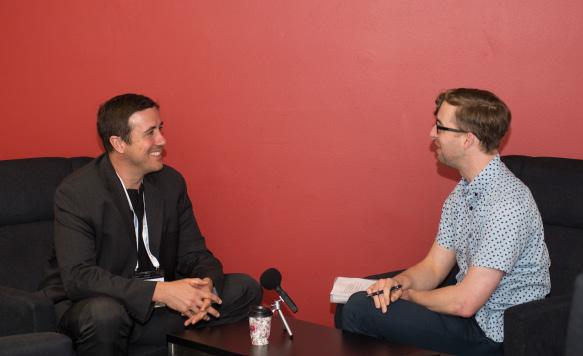
attendee. You can follow him on Twitter (@ lincolntracy) or check out some of his other writing on his website
Related reading
Placebo-induced changes in FMRI in the anticipation and experience of pain.
Wager TD, Rilling JK, Smith EE, Sokolik A, Casey KL, Davidson RJ, Kosslyn SM, Rose RM, Cohen JD. Science, 2004.
Link to full text.
Placebo effects on human mu-opioid activity during pain.
Wager TD, Scott DJ, Zubieta JK. Proceedings of the National Academy of Sciences of the United States of America, 2007.
Link to full text.
An fMRI-based neurologic signature of physical pain.
Wager TD, Atlas LY, Lindquist MA, Roy M, Woo CW, Kross E. New England Journal of Medicine, 2013. Link to full text.
Enormous collaborative effort sees chronic pain added to international disease coding system
The following is a summary of a talk given by Professor Milton Cohen of St Vincent’s Clinical School, UNSW Sydney at the 39th Annual Scientific Meeting of the Australian Pain Society which took place from April 7-10, 2019, on the Gold Coast, Australia

Pain is one of the leading reasons why patients seek medical care. Chronic pain— pain that persists for three months—is a significant source of human suffering and disability. However, the prevalence of chronic pain as a health problem is not well reflected in standard health service data. In large part this is due to the way it has been coded. The main coding system for medical conditions used in Australia is he International Classification of Diseases (ICD) published by the World Health Organization (WHO). Unfortunately, these have failed to reflect the phenomenon of chronic pain, such that related conditions were categorised in an unsystematic and often obscure manner.
At the Australian Pain Society’s 39th Annual Scientific Meeting Professor Milton Cohen, from St Vincent’s Clinical School at UNSW Sydney, presented an overview of the International Association for the Study of Pain (IASP) WHO Taskforce’s efforts on defining chronic pain for the 11th revision of the ICD coding system (ICD-11) on behalf of fellow Taskforce members Professors Stephan Schug (University of Western Australia) and Michael Nicholas (Royal North Shore Hospital, University of Sydney).
Previous definitions of chronic pain have centred around the notion that it is pain
that lasts beyond the normal expected healing time, and lacks the ‘alarm’ or ‘warning’ nature of acute pain. While these definitions may be appropriate to pain that occurs following surgery or trauma, the reasoning underlying them is difficult to apply in other conditions like chronic musculoskeletal or neuropathic pains. More recent definitions have included a temporal aspect, where chronic pain is defined as pain that lasts or recurs for more than three months.
The ICD is the preeminent tool used to code diagnoses, as well as to document investigations or therapies patients receive
within healthcare systems. As the name suggests, the ICD is used by countries all over the world to report target diseases and relevant comorbidities in clinical research. The tenth revision of the ICD coding system (ICD-10) contains some diagnostic codes for chronic pain conditions. However, the existing codes are limited as they do not reflect the underlying epidemiology of chronic pain conditions and are not organised in any systematic or logical manner.
Due to this lack of an adequate and available set of codes for chronic pain, it is difficult to accurately collect epidemiological and clinical data related to pain on an international level.
To address these shortcomings, the IASP and WHO established a joint taskforce to generate a systematic and improved classification of chronic pain. The Task Force for the Classification of Chronic Pain—comprising pain experts from all over the world—spent many years developing and testing a novel and pragmatic classification of chronic pain for the 11th revision of the ICD coding system.
“The taskforce divided existing conditions of chronic pain into primary and secondary chronic pain”, explained Dr Cohen. “Chronic primary pain refers to conditions where the cause of pain is not confidently known or identified.” The three-month criterion remains for this new classification of pain, which exemplifies the sociopsychobiomedical framework in which pain is considered. This diagnosis requires that the pain must be associated with significant emotional distress or functional disability. Emphasis has been placed on removing the stigma associated with chronic pain conditions, while avoiding terms such as non-specific and somatoform. “These are codes for ‘I don’t really believe you’”, Dr Cohen pointed out.
The classification structure for chronic primary pain relates to the notion that pain can occur in any body site (e.g., face, lowback, pelvis, etc.), or across a combination of sites. “This is not rocket science,” Dr Cohen described, “but rather a pragmatic descriptive classification for situations in which we do not know aetiology or pathogenesis of the pain.” The broad categories of chronic primary pain include musculoskeletal, visceral, headache or orofacial, complex regional pain, and widespread pain. Importantly, biological or psychological contributors may be identified, but unless another diagnosis would better account for the presenting symptoms, the diagnosis of chronic primary pain would be chosen.
“The whole philosophy of secondary chronic pain syndromes is that pain should be coded simultaneously with another disease if that disease is present—even if that disease itself is a cause of pain”, Dr Cohen said. The secondary chronic pain syndromes in ICD-11 are also enshrined in a sociopsychobiomedical framework. These classifications follow the existing WHO lexicon when referring to diseases—they start at the aetiology if they can, before moving onto the mechanism and then the affected body site (if possible).
The six pragmatic clusters of secondary chronic pain conditions are identified according to this lexicon. Some secondary chronic pain syndromes—such as cancerrelated, post-surgical, and post-traumatic pain—are clustered by the underlying aetiology. Others are determined by the mechanism involved, such as neuropathic pain, or by body site, such as visceral pain, headache or orofacial pain or musculoskeletal pain. The last of these, secondary musculoskeletal pain, can be further divided by mechanism (e.g., persistent inflammation, structural changes, or as a result of neurological disease or injury).
In addition to the broader labels, specifiers can be attached to chronic pain conditions. Specifiers can refer to the degree of pain severity, distress and interference a temporal dimension, and to the cognitive and behavioural factors involved.
“Another concept in the ICD-11 system is that of co-parenting—you could say it was a bastard of a concept”, Dr Cohen joked. As the name suggests, co-parenting refers to syndromes with multiple parents. “One example of co-parenting is chronic pain secondary to neuropathy induced by chemotherapy in the context of cancer”, explained Dr Cohen. This secondary pain syndrome has two clear parents—one is chronic cancer-related pain while the other is chronic neuropathic pain.
“Getting chronic pain into ICD-11 in its own right —and coding it- is a major step forward”, Dr Cohen summarised. The eleventh version of the ICD was released by the WHO in June 2018 and will be put into effect on January 1, 2022. While the transition will be slow, it will mark the culmination of many years hard work by the Task Force for the Classification of Chronic Pain—and an important step in the right direction towards having an internationally agreed, systematic way to classify chronic pain. This will have many important implications for patients, health care providers, researchers, and the provision of health services. Most significant of these is that patients should cease being invisible health care consumers as their pain conditions will be coded and recorded in health service statistics.
Lincoln Tracy is a postdoctoral research fellow in the School of Public Health and Preventive Medicine at Monash University and freelance writer from Melbourne, Australia. He is a member of the Australian Pain Society and enthusiastic conference attendee. You can follow him on Twitter (@ lincolntracy) or check out some of his other writing on his website
Related reading
A classification of chronic pain for ICD-11.
Treede, RD et al.
Pain, 2015.
Link to full text
Chronic pain as a symptom or a disease: the IASP Classification of Chronic Pain for the International Classification of Diseases (ICD-11).
Treede, RD et al.
Pain, 2019.
Link to full text
The IASP classification of chronic pain for ICD-11: chronic primary pain.
Nicholas, M et al.
Pain, 2019.
Link to full text
Thank you to APS member Joanne Harmon and colleagues Peter Summons and Isabel Higgins for sharing the following recent publication:
Joanne Harmon, Peter Summons, Isabel Higgins.
Article first published online: 7th May 2019
Journal Reference: Applied Nursing Research, 2019 Aug; 48, pp 22-29
DOI: https://doi.org/10.1016/j. apnr.2019.05.010
Tweet: @DrJoanneHarmon
Background
This paper reports an ethnographic insight into the perceptions of registered nurses (RNs) in acute care hospital unit settings when providing pain care provision for the older person (those aged 65 years and over).
Objective
The aim of this study was to explore pain care provision for the older person and gain understanding and insight into how it can be improved.
The participants were nine (9) registered nurses and 42 older persons. The research was located on the east coast of Australia in two (2) separate hospital sites and eight (8) acute care units.
Focused ethnography with participant observation of the RN’s and the consenting older persons over 6 months. Semistructured interviews of cognitively intact older persons (n= 12) and twenty-three (23) semi-structured interviews on nurses.
Barriers for pain care provision were culturally mediated practices driving clinical decision-making stemming from social influences which had developed into a set of social rules based on consensus. Nurses undertook workarounds to maintain a high visibility of pain assessment documentation driven by auditing and this had changed their meaning of pain care provision into a representation of transparency for accountability as opposed to patient centred care.
Conclusion
This study provided insight into aspects contributing on why pain care provision for the older person continues as less then optimal, when clinical practices are based on group think from socially constituted knowledge and provides understanding on how organizational drift develops from work-arounds.
Registered nurses (RN) have a pivotal role when undertaking pain care provision for their hospitalised patients. Pain care provision is person-centred and involves a comprehensive history, assessment, management and provision of education
about pain for a patient, as well as provision of relief they find acceptable and deem safe. Numerous instances within research have identified known discrepancies between nursing assessment of pain and the pain experiences of patients. Understanding and insight is lacking into why discrepancies and differences between nurses' and older persons' (those aged 65 years and over) perceptions of pain care provision are occurring. Presented here is an ethnographic insight from a nursing doctoral ethnographic study designed to explore practices of RN pain care provision for the older hospitalised person. This study provides understanding on how nursing culture can act as a barrier for effective pain care provision. The findings offer insight into why pain care provision can be less than ideal for the older person, despite the availability of evidence-based practice (EBP) guidelines. Furthermore, these findings are relevant for insight into the organisational context and how targeted measures in relation to education and managerial support are required for pain care.
Declaration
The authors wish to thank and acknowledge both the RNs and older person participants in this study for providing their time and input. Many thanks to the acute care units and hospitals who also took part in this study. The author also wishes to acknowledge the support for this study from Dr Erica Southgate and Prof Sian Maslin-Prothero.
Thank you to APS members Ivan Lin, Rob Waller, and Roger Goucke and colleauges
Louise Wiles, Yusuf Nagree, Michael Gibberd, Leon Straker, Chris Maher and Peter O’Sullivan for sharing the following recent publication.
Ivan Lin, Louise Wiles, Rob Waller, Roger Goucke, Yusuf Nagree, Michael Gibberd, Leon Straker, Chris Maher, Peter O’Sullivan
Article first published online: 2 March 2019
Journal Reference: Br J Sports Med 2019;0:1-10
DOI: doi.org/10.1136/ bjsports-2018-099878
Link: https://bjsm.bmj.com/content/ early/2019/03/02/bjsports-2018-099878. abstract
Objectives
To identify common recommendations for high-quality care for the most common musculoskeletal (MSK) pain sites encountered by clinicians in emergency and primary care (spinal (lumbar, thoracic and cervical), hip/knee (including osteoarthritis [OA] and shoulder) from contemporary, high-quality clinical practice guidelines (CPGs).
Systematic review, critical appraisal and narrative synthesis of MSK pain CPG recommendations.
Included MSK pain CPGs were written in English, rated as high quality, published from 2011, focused on adults and described development processes. Excluded CPGs were for: traumatic MSK pain, single modalities (eg, surgery), traditional healing/medicine, specific disease processes (eg, inflammatory arthropathies) or those that required payment.
Four scientific databases (MEDLINE, Embase, CINAHL and Physiotherapy Evidence Database) and four guideline repositories.
6232 records were identified, 44 CPGs were appraised and 11 were rated as high quality (low back pain: 4, OA: 4, neck: 2 and shoulder: 1). We identified 11 recommendations for MSK pain care: ensure care is patient centred, screen for red flag conditions, assess psychosocial factors, use imaging selectively, undertake a physical examination, monitor patient progress, provide education/information, address physical activity/exercise, use manual therapy only as an adjunct to other treatments, offer high- quality non-surgical care prior to surgery and try to keep patients at work.
These 11 recommendations guide healthcare consumers, clinicians, researchers and policy makers to manage MSK pain. This should improve the quality of care of MSK pain.
None declared

“… there is an opportunity to build dignity with every human encounter. Given that it is the human hand that has perpetrated violation it is the human hand has the power to health wounds” (Kaplan & Webster, 2003).
Australia is an immigrant nation with a strong commitment to reaching out and assisting some of the world’s most vulnerable refugees to re-establish their lives in Australia. In 2016-2017 it is estimated that there were over 24000 humanitarian and refugees resettled in Australia, including refugees from Syrian and Iraq (Doherty, 2018).
Refugees and people from refugee-like backgrounds may have been through many traumatic experiences, including torture, as a result of the actions of other human beings in the context of war and persecution that could have a long-term traumatic impact.
Some of these experiences include Systematic State Terrorism, torture,
bombings, killings, kidnappings, sexual assault, detention, disappearances, harassment, being forced to flee; deprivation of food, shelter, health care; loss of family, friends, community, safety, home, possessions, routine, schooling, employment, and control over their lives (NSW Service for the Treatment and Rehabilitation of Tourture and Trauma Survivors, 2019).
Although it is difficult to estimate the impact of torture and trauma on refugee populations the IASP estimates around 80% experience chronic physical and psychological pain (IASP, 2019).
Many refugees have difficulties is accessing health services simply because they don’t know what is available to them. Many have language and cultural barriers that imped their ability to communicate with caregivers and many caregivers are unprepared to deal with patients who are survivors of torture and related traumas. Often “the horror and pain contained in
a survivor’s story can weaken our resolve and undermine our belief that anything can really be done to assist” (Kaplan, 1998).
There are resources available to help clinicians assess and manage pain in this particularly vulnerable group. However, unlike other vulnerable groups, victims of torture are doubly vulnerable as there is little evidence available related to pain management in this specific group. There has been a Cochrane review conducted on ‘treating persistent pain in torture survivors’ and it found “there is no good evidence about any method of treating long-lasting pain following torture”. (Baird, Williams, Hearn, & Amris, 2017) What is needed is more research into the care of people suffering pain post torture and related traumas.
The 2019 International Association for the Study of Pain (IASP) Global Year Against Pain in the Most Vulnerable
The IASP has developed two pain in survivors of torture fact sheets, which can be found at https://www.apsoc.org.au/ global-year-against-pain:
• Chronic Pain as a Consequence of Torture: Assessment
• Chronic Pain as a Consequence of Torture: Management
IASP have a number of tools and other resources that have been translated into a number of different languages.
Foundation House: The Victorian Foundation for the survivors of torture. Inc http://www.foundationhouse.org.au
The Foundation House developed the Australian Refugee Health Practice Guide in collaboration with clinicians who specialise in refugee health, the Forum of Australian Services for the Survivors of Torture and Trauma (FASSTT) and the Refugee Health
Network of Australia with funds from the Australian Government department of Health. This book was developed to help guide primary care providers caring for people from refugee backgrounds. It covers areas such as the management of psychological effects of torture or other traumatic events. It includes validated screening tools that have been developed to assess the psychological distress in cross cultural settings.
Rebuilding Shattered Lives is a training manual developed to help carers overcome the significant challengers in dealing with pain and horror experienced by the survivors of torture and trauma. If you care for people from refugee backgrounds this manual could be considered as essential reading.
Baird, E., Williams, A., Hearn, L., & Amris, K. (2017, August 18). Treating persistant pain in torture survivors. Retrieved from Cochrane: cochrane.org
Doherty, B. (2018, February 11). Australia take the most refugees since start of humanitarian program. Retrieved from The Guardian Australian edition: theguardian. com
Kaplan, I. (1998). Shattered Lives. Retrieved from Foundation House: https://www. foundationhouse.org.au/wp-content/ uploads/2014/08/Rebuilding_Shatterd_ Lives_Complete.pdf
NSW Service for the Treatment and Rehabilitation of Tourture and Trauma Survivors. (2019). Learn about torture and trauma. Retrieved from startts.org.au: startts.org.au
The Victorian Foundation for Survivors of Torture. (2005). Sexual Violence and Refugee Women from West and Central Africa. Retrieved 2019, from survivorsvic. org.com
Reminder that we are keen that members inform us when they have publications so that this can be shared with your APS colleagues.
Please send the newsletter editor (via the APS Secretariat, aps@apsoc.org.au) the title, authors and reference (i.e. the journal, volume etc.) of the article,
preferably with a short explanatory note to give our readers the gist of the article, e.g. the conclusions part of the abstract; if you would like to supply a short commentary on the article, even better.
We are delighted to congratulate the following APS members who have received awards in the recent Queen’s Birthday Honours.
Companion of the Order of Australia (AC)
Emeritus Professor Maree SMITH AC

For eminent service to science through pioneering research and innovation in the treatment of neuropathic pain, to gender equity, and as role model.

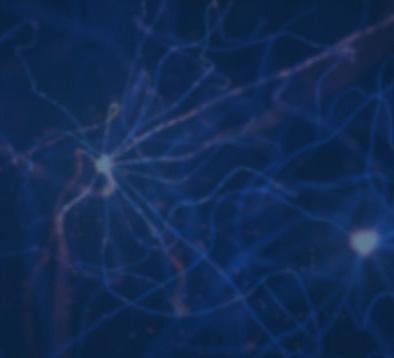
Member of the Order of Australia (AM)

Dr C George MERRIDEW AM
For significant service to surgical and obstetric anaesthesia.
The Bupa Health Foundation is seeking nominations for its 2019 Emerging Health Researcher Award.

Offered once a year, this award recognises the valuable contribution early career researchers (no more than 5 years post PhD) make toward improving health outcomes for all Australians. The award is open to all disciplines of health and medical research with a particular focus on those incorporating translation into their work.
The Winner will receive a prize of $25,000 to use towards furthering their research career.
Selected Finalists and Highly Commended nominations will also be acknowledged through the awards.
Nominations close on Monday 15th July 2019 (9AM AEST).
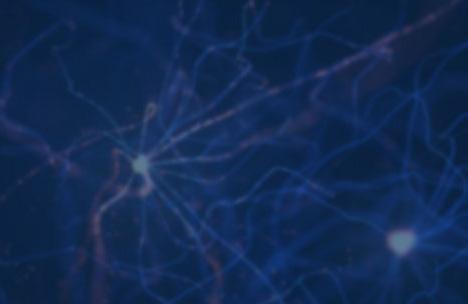
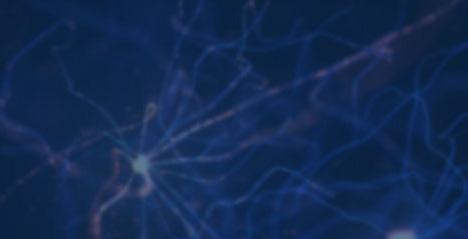
18 SEPTEMBER 2019
Please see the link below for more details Banting Postdoctoral Fellowships
Details for the next Occupational Therapy Australia Pain Management Special Interest Group (SIG) meeting:

Time & Date:
Topic:
Details:
Enquiries:
Attendance:
6pm (AEST) on Monday 05 August 2019
Sleep and Pain
OT Australia website, Member Resources: https://www.otaus.com.au/ member-resources/sig/pain-management info.vic@otaus.com.au info@otaus.com.au via webinar or OT Australia office: 5/340 Gore Street, Fitzroy VIC 3065
ROYAL NORTH SHORE HOSPITAL

Formal Degree Course (Online)
Graduate Certificate, Graduate Diploma and Masters
Endorsed by the International Society for the Study of Pain (IASP), this leading degree program provides advanced evidence-based and clinically relevant education in pain management for graduates in medicine, dentistry, nursing, physiotherapy, psychology and other allied health disciplines.
The program has been developed and is taught by The Faculty of Medicine and Health’s Pain Management Research Institute (PMRI), based at Royal North Shore Hospital and the The University of Sydney’s Kolling Institute.
The program is conducted entirely online and commences in March or August each year, with enrolments closing either late January or late June.
For dates & further information visit: sydney.edu.au/medicine/pmri/education
T: +61 2 9463 1516
E: paineducation@sydney.edu.au
CONTACT
For further information or to complete an Expression of Interest visit: www.dcconferences.com.au/rmsanz2019


DC Conferences Pty Ltd
P: +61 2 9954 4400
E: rmsanz2019@dcconferences.com.au
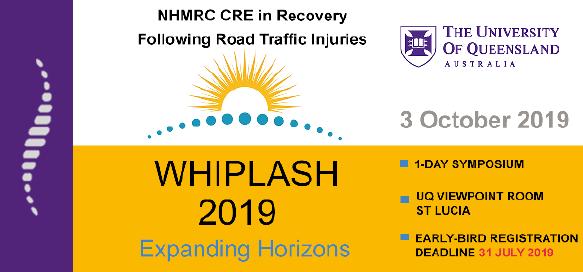
APIC2 The 2nd Asia Pacific Conference on Integrated Care will bring together researchers, clinicians, policy makers, industry, NGOs and consumer representatives from Australia and across the Asia-Pacific region. Led by colleagues at IFIC Australia, the Scientific Committee. Call for papers is now open until Friday, 28 June.

THEMES
Achieving Value for People and Populations Implementing Integrated Care Empowering and Engaging People and Communities Integrated Care Innovations, Models and Systems

Evaluation, Monitoring and Quality Improvement Improving People’s Health and Wellbeing through Integrated Care
Email events@integratedcarefoundation.org Web www.integratedcarefoundation.org/apic2
Join us online #AusPainSoc www.dcconferences.com.au/aps2020
Expressions of interest online at www.dcconferences.com.au/aps2020
For sponsorship and exhibition opportunities or more information please contact the APS Conference Secretariat
DC Conferences Pty Ltd
P: 61 2 9954 4400
E: aps2020@dcconferences.com.au
PLUS...
• Pre-Conference Workshops
• Topical Sessions
• Extensive Industry Exhibition
• Discipline Sub Group Meetings
• Sponsored Sessions
• Welcome Reception
• Conference Gala Dinner
Join us online #AusPainSoc dcconferences.com.au/aps2020
Submission Deadlines
Topical Sessions 1 October 2019
Free Papers & Posters 31 October 2019
Rising Star Award 31 October 2019
Early Bird Deadline 19 February 2020
Professor John F. Cryan
John F. Cryan (PhD MRIA ) is Professor & Chair in the Department of Anatomy & Neuroscience, University College Cork, Ireland and is also a Principal Investigator at APC Microbiome Ireland. Professor Cryan’s current research is focused on understanding the interaction between brain, gut & microbiome and how it applies to stress, psychiatric and immune-related disorders at key time-windows across the lifespan.
Neuromodulation Society of Australia & New Zealand
14th Annual Scientific Meeting (NSANZ 2020)

Neuromodulation,Value Based Care

7-9 AUGUST 2020
Sofitel Brisbane Central, Queensland

A/Professor Erin E. Krebs


A/Professor Erin E. Krebs, (MD, MPH) is an internal medicine physician and health services researcher at the Minneapolis Veterans Affairs (VA) Center for Care Delivery and Outcomes Research and University of Minnesota Medical School. Her research addresses clinical questions related to chronic pain and opioid analgesics, informed by her practice as a primary care physician.
Dr Janet Bultitude
Dr Janet Bultitude is a Senior Lecturer at the Psychology Department and Centre for Pain Research at the University of Bath in the United Kingdom. Her research interests are in pain, attention, sensorimotor interaction, and neurorehabilitation. Drawing from her background in stroke research, her most recent work has focused on “neglect-like” changes and other sensory symptoms in Complex Regional Pain Syndrome, and how these could be targeted to bring about pain relief.
Cadaver Workshop
7 AUGUST 2020
QUT Medical Engineering Research Faculty, Brisbane
www.dcconferences.com.au/nsanz2020
• SKIP Solutions for Kids In Pain, Canada: New website and resources: https://www.kidsinpain.ca/
• The Hon Ken Wyatt AM, MP Minister for Senior Australians and Aged Care, Minister for Indigenous Health Working with Aboriginal People: Media release for launch of Pain in Residential Aged Care Facilities: Management Strategies, 2nd Edition: http://www.health.gov.au/internet/ ministers/publishing.nsf/Content/ B2F04E77AA383053CA258 3A60077346E/$File/KW028.pdf
• New videos from NSW Health: Working with Aboriginal People: https://www.youtube.com/ watch?v=AV4Muq87ekQ&feature=em-uploademail
• Draft Report on Pain Management Best Practices: Updates, Gaps, Inconsistencies, and Recommendations from US Department of Health & Human Services – Published 12 December 2018: https://www.hhs.gov/ ash/advisory-committees/pain/ reports/2018-12-draft-report-on-updates-gaps-inconsistencies-recommendations/index.html#. XDQNbmaQ-yQ.mailto
• Medicinal cannabis for chemotherapy-induced nausea and vomiting
(CINV): prescribing with limited evidence – Published 12 November 2018: https://www.mja.com.au/ journal/2019/210/1/medicinal-cannabis-chemotherapy-induced-nausea-and-vomiting-prescribing-limited
• The Third Australian Atlas of Healthcare Variation: latest issue, available online at https://www.safetyandquality.gov.au/atlas
• Palliative Care Australia (PCA) and Australian Indigenous: HealthInfoNet (HealthInfoNet) has launched a new Palliative Care and End-of-Life Resource Portal for the workforce who support Aboriginal and Torres Strait Islander peoples at Parliament House in Canberra. The palliative care and end-of-life portal is designed to assist health professionals who provide care for Aboriginal and Torres Strait Islander people, their families and communities. https://healthinfonet. ecu.edu.au/learn/health-system/ palliative-care/
• Painaustralia eNewsletter latest issue, available online at: http:// www.painaustralia.org.au/media/ enews
• ePPOC- electronic Persistent Pain Outcomes Collaboration: For more information about ePPOC, refer to the website: http://ahsri.uow.edu.au/ eppoc/index.html
• PainHEALTH website: http://painhealth.csse.uwa.edu.au/
• ANZCA/FPM Free Opioid Calculator App: Smart phone app that converts opiates to milligrams of morphine, available for both iPhone and Android: http://www.opioidcalculator.com.au
• Stanford University: CHOIR Collaborative Health Outcomes Information Registry: https://choir. stanford.edu/
• 2018 Global Year for Excellence in Pain Education: Launched 22JAN18. See information and resources on our website: http://www.apsoc.org.au/ global-year-against-pain
• Opioid Podcasts for GPs: 20 week series from the Hunter Postgraduate Medical Institute: http://www.gptraining.com.au/recent-podcasts
• Airing Pain: Pain resources via an online radio show produced by Pain Concern, a UK registered Charity: http://painconcern.org.uk/airing-pain/
• Digital Health Guide: Developed by Primary Health Network
Tasmania: https://digitalhealthguide.com.au/Account/ LogOn?ReturnUrl=%2fSpecialtyForm ulary%2f2
At login. Username: connectingcare Password: health
• 2017 Australia’s Health Tracker by Socio-economic status: Released
28NOV17: https://www.vu.edu.au/australian-health-policy-collaboration/ publications#goto----------------australias-health-tracker-by-socioeconomic-status-----------=1
• Indigenous Resources: New webpage on the APS website aggregating Indigenous resources: https:// www.apsoc.org.au/IndigenousResources
• IASP Statement on Opioids: Approved February 2018: https:// www.iasp-pain.org/Advocacy/ OpioidPositionStatement
This reference can also be found on the APS Position Papers webpage.
• NSW Cannabis Medicines Advisory Service (CMAS): Launched 29JAN18
Fact Sheet on our website: https://www.apsoc.org.au/PDF/ Fact_Sheets/20180129_NSWCannabisMedicinesAdvisoryServiceCMAS_Fact_Sheet_FINAL.PDF
Service available: 9am-5pm MondayFriday
Hotline: (02) 4923 6200 or email: HNELHD-CMAS@hnehealth.nsw.gov.au
• Chronic Pain edition issued 01JUN15: http://www.nps.org.au/publications/ health-professional/nps-news/2015/ chronic-pain and https://www.nps. org.au/medical-info/clinical-topics/ news/chronic-pain?utm_medium=twitter&utm_source=17-0724&utm_campaign=pain&utm_content=painweek-MN#key-points
• Choosing Wisely Australia – News & media: http://www.choosingwisely. org.au/news-and-media
• Over the counter codeine – changes to supply: https://www.nps.org.au/ medical-info/clinical-topics/over-thecounter-codeine-changes-to-supply
• Medicines with codeine – what you need to know: https://www.nps. org.au/medical-info/consumer-info/ medicines-with-codeine-what-youneed-to-know
• Low Back Pain resources published 16OCT18: https://www.nps.org. au/medical-info/clinical-topics/ low-back-pain
• Codeine information hub: https:// www.tga.gov.au/codeine-info-hub
• Guidance for the use of medicinal cannabis in the treatment of chronic non-cancer pain in Australia, v1-DEC17: https://www.tga.gov. au/publication/guidance-use-medicinal-cannabis-treatment-chronic-non-cancer-pain-australia
• Our Mob- Resources for Aboriginal People: https://www.aci.health.nsw. gov.au/chronic-pain/our-mob
• Brainman and Pain Tool Kit translations, SEP15: http://www.aci. health.nsw.gov.au/chronic-pain/ translated-resources
• Pain Management Resources: http://www.aci.health.nsw.gov.au/ resources/pain-management
• Quicksteps to Manage Chronic Pain in Primary Care: http://www.aci.health. nsw.gov.au/chronic-pain/health-professionals/quick-steps-to-managechronic-pain-in-primary-care
• Built into Quicksteps- “How to de-prescribe and wean opioids in general practice”: http://www.aci. health.nsw.gov.au/chronic-pain/ health-professionals/quicksteps-to-manage-chronic-painin-primary-care/how_to_de-prescribe_and_wean_opioids_in_general_practice
• A list of helpful apps for consumers and clinicians now available at: http://www.aci.health.nsw.gov.au/ chronic-pain/health-professionals/ management-of-chronic-pain
• Chronic Pain in the ED: https://www. aci.health.nsw.gov.au/networks/ eci/clinical/clinical-resources/ clinical-tools/pain-management/ chronic-pain-in-the-ed
• APS Plenary Recordings
As an exclusive benefit to APS members, the following Plenary videos are now available for free access:
- 2018 conference in Sydney
- 2017 conference in Adelaide
- 2016 conference in Perth
• Better Pain Management online learning modules
APS members receive a 20% discount
• BPR SIG Expert Database Survey and Results
• Refer to our website for a full listing of media releases: http://www.apsoc.org. au/Media
PHD
Seqirus #1 — APS — APRA
Cops for Kids #1 — APS — APRA
Cops for Kids #2 — APS — APRA
Cops for Kids #3 — APS — vAPRA
Sherelle Casey “Cannabinoids for neuropathic pain”
Dr Adrienne Harvey “A pilot study of gabapentin for managing pain in children with dystonic cerebral palsy”
Dr Tasha Stanton “Reframe the pain: Dividing attention and altering memory to reduce needle pain and distress in children”
Dr Nicole Andrews “An evaluation of the usability of a paediatric version of the Pain ROADMAP app”.
“Antinociceptive pharmacology of morphine and its major glucuronide metabolites”
“Antinociceptive properties of the neurosteroid alphadolone”
“Conditional comfort: A grounded theory study in nursing approaches to acknowledging and responding to pain in nursing home residents with dementia” Mundipharma
“Pain Management Programmes in Spinal Cord Injury: Cognitive Behavioural Pain Management Programmes in the Management of Sub-acute and Chronic Spinal Cord Injury Pain”
NEW MEMBERS
Mundipharma #2 —
APS — APRA Zoe Brett 2011
APS #3 — APRA Susan Slatyer 2013
“Individual differences in vulnerability to the development of chronic pain following injury”
“Caring for patients experiencing episodes of severe pain in an acute care hospital: Nurses’ perspective”
APS #4 — APRA Amelia Edington 2013
“Defining inhibitor binding sites unique to the glycine transporter, GLYT2: A potential target for the treatment of chronic pain”
Janssen Cilag #1 —
APS — APRA Mary Roberts Due
“An investigation of the role of sleep in chronic pain”
Mundipharma #3 —
APS — APRA Audrey Wang 2017
“The cortical integration of tactile sensation in complex regional pain syndrome”
Janssen Cilag #2 —
APS — APRA Sarah Kissiwaa 2017
APS #5 — APRA James Kang 2019
“Pain induced synaptic plasticity in the amygdala”
“The effect of nerve injury on behavioural selection and its relationship to prefrontal function”
10-12 Jul 2019
Occupational Therapy Australia
Together Towards Tomorrow
International Convention Centre, Sydney, NSW http://www.otaus2019.com.au
25 -26 Jul 2019
Arthritis & Osteoporosis WA
Making Sense of Pain: 9th Inter-Professional Workshop
Wylie Arthritis Centre, Perth, WA https://www.arthritiswa.org.au/events/details/id/980/
26-28 Jul 2019
Pharmaceutical Society of Australia and Australasian Pharmaceutical Science Association
PSA19 - Pharmacists in 2013: unlocking your opportunities
Hyatt Regency, Darling Harbour, Sydney, NSW https://www.psa19.com
12-14 Aug 2019
Dietitians Association of Australia, 36th National Conference
More than meets the eye
Gold Coast Conference and Exhibition Centre, Gold Coast, QLD https://daa2019.com.au
4-7 Sep 2019
European Pain Federation EFIC 11th Congress
Bringing the future to the present Feria Valencia, Valencia, Spain https://efic-congress.org
10-13 Sep 2019
Palliative Care Australia and Hospice New Zealand
2019 Oceanic Palliative Care Conference
Perth Convention & Exhibition Centre, Perth, WA https://oceanicpallcare.com
20 Sep 2019
Pain Management Research Institute - The University of Sydney
Clinical Skills Workshop - Dealing with emotionally challenging patient encounters
Kolling Building, Royal North Shore Hospital, St Leonards, Sydney, NSW http://sydney.edu.au/medicine/pmri/education/continuing/workshop-clinical-skills.php
20-24 Sep 2019
Australian Society of Anaesthetists
National Scientific Congress 2019
International Convention Centre, Sydney, NSW
http://asa2019.com.au
3 Oct 2019
UQ RECOVER Injury Research Centre
Whiplash 2019: Expanding Horizons
University of Queensland, ViewPoint, Building 33, Brisbane, QLD
https://cre-rfrti.centre.uq.edu.au/event/367/whiplash-2019-expanding-horizons
17-19 Oct 2019
Australian Physiotherapy Association
Transform 2019
Adelaide Convention Centre, Adelaide, SA
https://transform.physio
17-19 Oct 2019
Academy of Child & Adolescent Health
ACAH2019 Annual Conference
Hotel Grand Chancellor, Adelaide, SA
admin@acah.org.au
18-20 Oct 2019
Faculty of Pain Medicine Spring Meeting
Uniting cancer pain management, exploring different angles
The Byron, Byron Bay, NSW
http://fpm.anzca.edu.au/events/2019-spring-meeting
20-23 Oct 2019
Rehabilitation Medicine Society of Australia and New Zealand (RMSANZ) 4th Annual Scientific Meeting
Contemporary Rehabilitation: Knowledge Translation, Collaboration and Community Engagement
Adelaide Convention Centre, Adelaide, SA
https://www.dcconferences.com.au/rmsanz2019/
24-26 Oct 2019
RACGP - GP19
Your patients. Your community. Your solutions.
Adelaide Convention Centre, Adelaide, SA
https://www.gp19.com.au
24-26 Oct 2019
Australian College of Rural and Remote Medicine (ACRRM) and Rural Doctors Association of Australia (RDAA)
Rural Medicine Australia - RMA19 - Riding the wave of change
The Star, Gold Coast, QLD https://rma.acrrm.org.au
25 Oct 2019
Pain Interest Group Nursing Issues (PIGNI) Professional Development Day Delving into Pain
SMC Conference & Function Centre, Sydney, NSW
https://dcconferences.eventsair.com/pigni2019/
11-13 Nov2019
International Foundation for Integrated Care - IFIC Australia
APIC2 - 2nd Asia Pacific Conference on Integrated Care
Melbourne Convention and Exhibition Centre, Melbourne, VIC https://integratedcarefoundation.org/events/apic2-2nd-asia-pacific-conference-on-integrated-care
29 Nov 2019
Pain Management Research Institute - University of Sydney
Descending the analgesic ladder: A landmark forum on opioid de-prescribing for chronic pain Taronga Centre, Taronga Zoo, Sydney, NSW
https://sydney.edu.au/medicine/pmri/education/continuing/forum-deprescribing-opioids.php
18-21 Mar 2020
New Zealand Pain Society Annual Scientific Meeting 2020
Making the Connection - Cortex, Culture and Community
Copthorne Hotel, Bay of Islands, New Zealand
TBA
5-8 Apr 2020
Australian Pain Society 40th Annual Scientific Meeting
In the IASP Global Year for the Prevention of Pain Hotel Grand Chancellor, Hobart, TAS https://www.dcconferences.com.au/aps2020/
7-8 Aug 2020
Neuromodulation Society of Australia & New Zealand (NSANZ) 14th Annual Scientific Meeting
Neuromodulation, Value Based Care
Sofitel Brisbane Central, Brisbane, QLD
https://dcconferences.eventsair.com/nsanz2020/
All people will have optimal access to pain prevention and management throughout their life.
MISSION:
The Australian Pain Society is a multidisciplinary organisation aiming to minimise pain and related suffering through advocacy and leadership in clinical practice, education and research.
AIMS:
• To promote the provision of healthcare services for pain management
• To promote equity of access to pain management services
• To actively engage with key stakeholders and contribute to their activities

• To provide a contemporary forum to discuss issues relating to pain research and treatment
• To foster and support pain-related evidence-based research
• To share and promote the expertise of all disciplines involved in the treatment of pain
• To promote and facilitate evidence-based pain related education for health professionals and the community
• To promote the development and use of standards and outcome measures in everyday clinical practice
PRESIDENT:
Dr Anne Burke
Central Adelaide Local Health
Network, Royal Adelaide Hospital
Adelaide SA 5000
Tel: 08 8222 5403 | Fax: 08 8222 5904
PRESIDENT—ELECT:
Ms Trudy Maunsell
Acute Pain Service
Princess Alexandra Hospital
Woolloongabba QLD 4102
Tel: 07 3176 5547 | Fax: 07 3176 5102
SECRETARY:
Dr Will Howard

Director, Pain Service
Austin Health
Studley Road
Heidelberg VIC 3084
Tel: 03 9496 3800 | Fax: 03 9459 6421
TREASURER:
Mr Tim Austin
Camperdown Physiotherapy
Inner West Pain Centre
100 Carillon Avenue
Newtown NSW 2042
Tel: 02 9517 1787 | Fax: 02 9516 2491
ACT DIRECTOR:
Dr Andrew Watson


Calvary Hospital
Canberra ACT 2617
Tel: 02 6201 6352
NSW DIRECTOR:
Dr Tim Ho

Royal Prince Alfred Hospital
Inner West Pain Centre
100 Carillon Avenue
Newtown NSW 2042
Tel: 02 9517 1764 | Fax: 02 9517 1832
NT DIRECTOR:
Ms Diann Black
Royal Darwin Hospital
PO Box 41326
Casuarina NT 0811
Tel: 08 8931 1029
QLD DIRECTOR:
Mrs Joyce McSwan
Gold Coast Primary Health Network
Persistent Pain Program, QLD


Tel: 0412 327 795 | Fax: 07 3539 9801
SA DIRECTOR:
Dr Michelle Harris


Royal Adelaide Hospital and Lyell McEwin Hospital
Adelaide SA
Email: michelle.harris2@sa.gov.au
TAS DIRECTOR:
Dinah Spratt
Physiotas Physiotherapy
3/11 Poyston Drive
Shearwater TAS 7307
Tel: 03 6428 7500 | Fax: 03 6424 7811
VIC DIRECTOR:
Dr Laura Prendergast




Pain Service, Austin Health
Chronic Pain Clinic, Goulburn Valley
Health VIC
Tel: 03 9496 3134 or 03 5832 3020
WA DIRECTOR:
Mr Shadreck Tozana
Functional Revival and Baptistcare
Bethal, 2 Bethal Way Albany WA 6330
Tel: 0437 541 165 | Fax: 08 9841 8480
IMMEDIATE PAST PRESIDENT:
Ms Fiona Hodson
Hunter Integrated Pain Service
John Hunter Hospital Campus
New Lambton NSW 2305
Tel: 02 4922 3435 | Fax: 02 4922 3438
SPC CHAIR:
A/Prof Kevin Keay




Department of Anatomy
University of Sydney
Sydney NSW 2006
Tel: 02 9351 4132 | Fax: 02 9351 2817
IASP LIAISON:
Professor Michael Nicholas
Pain Management Research Institute

Royal North Shore Hospital
St Leonards NSW 2065
Tel: 02 9926 7894 | Fax: 02 9662 6279
Website: www.iasp–pain.org
COMMUNICATIONS/WEBSITE/ SOCIAL & OTHER MEDIA COORDINATOR:
Dr Will Howard
Director, Pain Service
Austin Health
Studley Road, Heidelberg VIC 3084
Tel: 03 9496 3800 | Fax: 03 9459 6421
NEWSLETTER EDITOR:
Dr Stephanie Davies


WA Specialist Pain Services
Cottesloe WA 6011
Tel: 0412 933 419 | Fax: 08 9286 8023
NEWSLETTER ASSISTANT
EDITOR:
Dr Lincoln Tracy
School of Public Health and Preventive Medicine
Monash University
Melbourne VIC 3004
Tel: 03 9903 0288
PHD SCHOLARSHIP CHAIR:
A/Prof Michael Farrell

School of Biomedical Sciences
Monash University
Clayton VIC 3800
Tel: 03 9905 6094
SECRETARIAT:
DC Conferences Pty Ltd
PO Box 637
North Sydney, NSW 2059
Tel: 02 9016 4343 | Fax: 02 9954 0666
Email: aps@apsoc.org.au
Website: www.apsoc.org.au